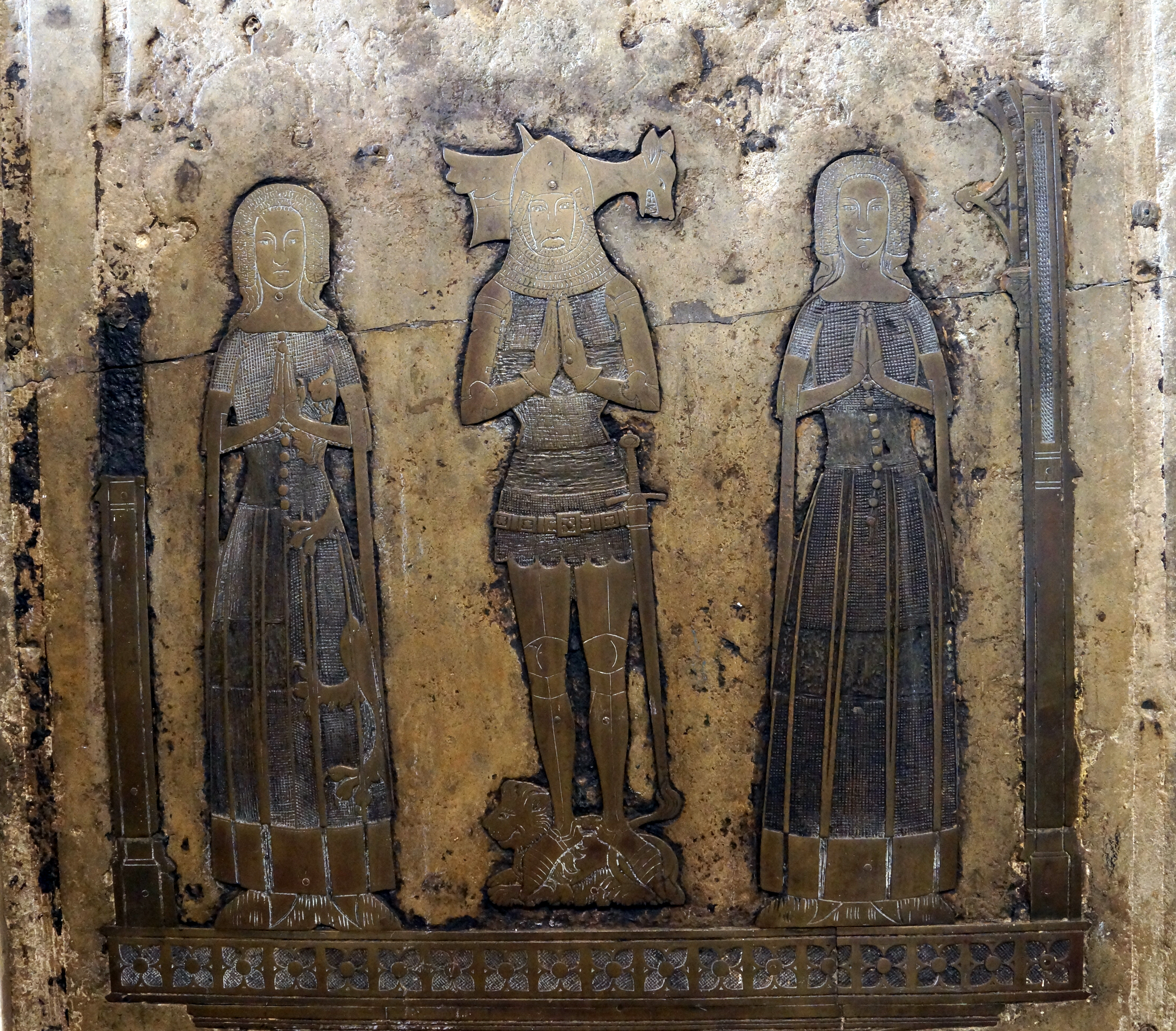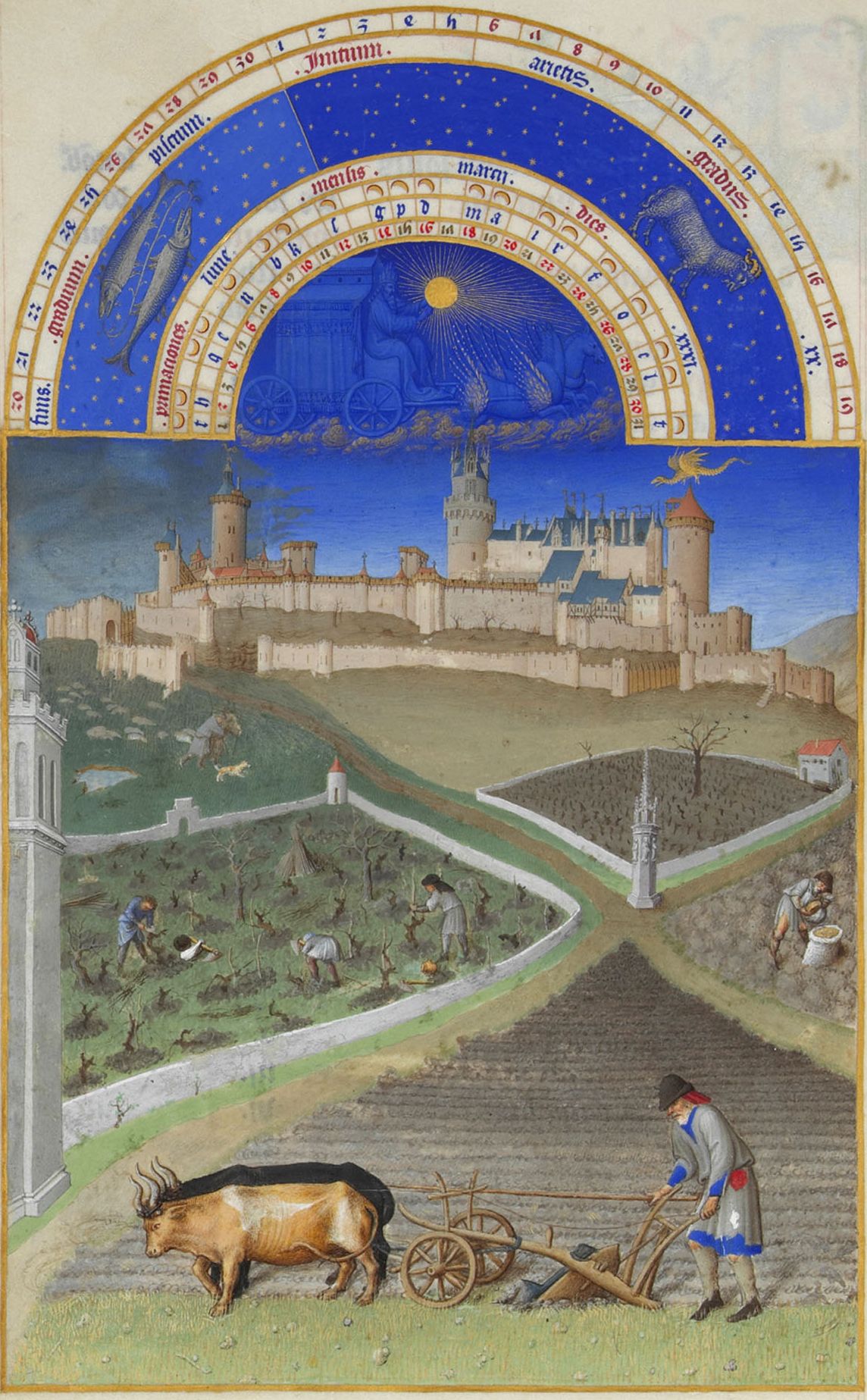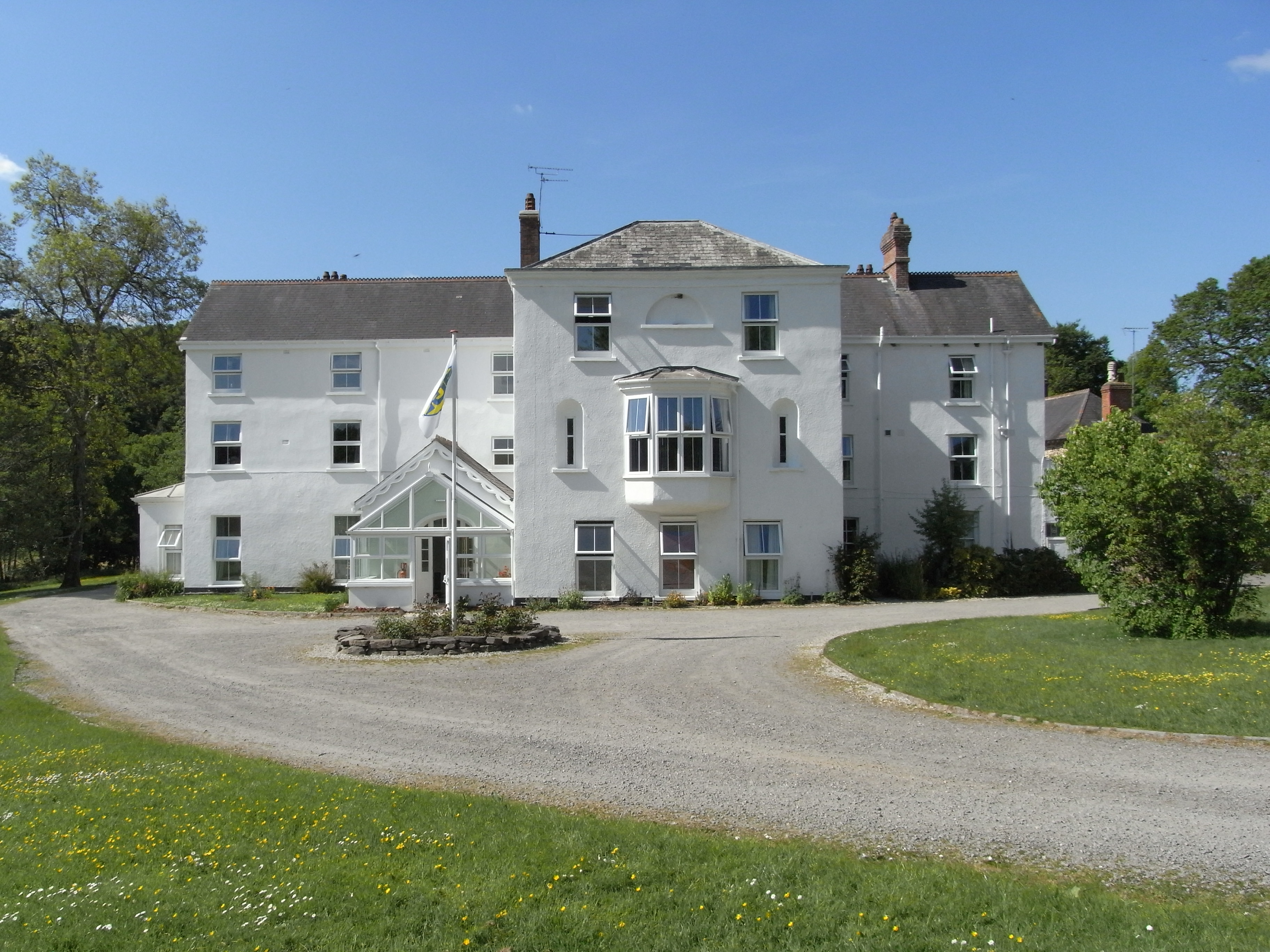|
John Rolle (1522–1570)
John Rolle (1522–1570) of Stevenstone, in the parish of St Giles in the Wood, near Great Torrington, Devon, was the eldest son and heir of George Rolle (died 1552),Vivian, p.652, pedigree of Rolle MP, founder of the great Rolle family of Stevenstone, by his second wife Eleanor Dacres. Three monuments survive in memory of his immediate family in the churches of St Giles in the Wood and Chittlehampton. Marriage and children He married Margaret Ford, daughter of John Ford (died 1538) of Ashburton, the son and heir of William Ford of Chagford. John Ford purchased the estate of Bagtor in the parish of Ilsington, which his male heirs successively made their seat. Margaret's great nephew was John Ford (1586-c.1639) the dramatist, who was baptised at Ilsington, and her great-great-nephew was Sir Henry Ford (1617-1684), MP for Tiverton and Secretary of State for Ireland. By his wife he had eight sonsEight sons as shown and named on the monumental brass in St Giles's Church, of whom only se ... [...More Info...] [...Related Items...] OR: [Wikipedia] [Google] [Baidu] |
Alverdiscott
Alverdiscott (pronounced ''Alscott'', or ) is a village, civil parish, former manor and former ecclesiastical parish in the Torridge district of Devon, England, centred south-south-west of Barnstaple. Demography A rural population – having 105 homes – Alverdiscott's population grew by five in the ten years to 2011 according to the decennial census of that year.Key Statistics: Population. ( 2011 census Parish: Alverdiscott) Retrieved 2015-06-20. Transport Roads The B3232 skirts the nucleus of the village, the main road between Great Torrington and Barnstaple thoug ...[...More Info...] [...Related Items...] OR: [Wikipedia] [Google] [Baidu] |
Monumental Brass
A monumental brass is a type of engraved sepulchral memorial, which in the 13th century began to partially take the place of three-dimensional monuments and effigies carved in stone or wood. Made of hard latten or sheet brass, let into the pavement, and thus forming no obstruction in the space required for the services of the church, they speedily came into general use, and continued to be a favourite style of sepulchral memorial for three centuries. In Europe Besides their great value as historical monuments, monumental brasses are interesting as authentic contemporary evidence of the varieties of armour and costume, or the peculiarities of palaeography and heraldic designs, and they are often the only authoritative records of the intricate details of family history. Although the intrinsic value of the metal has unfortunately contributed to the wholesale spoliation of these interesting monuments, they are still found in remarkable profusion in England, and they were at one ... [...More Info...] [...Related Items...] OR: [Wikipedia] [Google] [Baidu] |
Edward Seymour, 1st Duke Of Somerset
Edward Seymour, 1st Duke of Somerset (150022 January 1552) (also 1st Earl of Hertford, 1st Viscount Beauchamp), also known as Edward Semel, was the eldest surviving brother of Queen Jane Seymour (d. 1537), the third wife of King Henry VIII. He was Lord Protector of England from 1547 to 1549 during the minority of his nephew King Edward VI (1547–1553). Despite his popularity with the common people, his policies often angered the gentry and he was overthrown. Origins and early career Edward Seymour was born c. 1500, the son of Sir John Seymour (1474–1536), feudal baron of Hatch Beauchamp in Somerset, by his wife Margery Wentworth, eldest daughter of Sir Henry Wentworth of Nettlestead, Suffolk, and descended from Edward III. In 1514, aged about 14, he received an appointment in the household of Mary Tudor, Queen of France, and was ''enfant d’honneur'' at her marriage with Louis XII. Seymour served in the Duke of Suffolk's campaign in France in 1523, b ... [...More Info...] [...Related Items...] OR: [Wikipedia] [Google] [Baidu] |
Manorialism
Manorialism, also known as the manor system or manorial system, was the method of land ownership (or " tenure") in parts of Europe, notably France and later England, during the Middle Ages. Its defining features included a large, sometimes fortified manor house in which the lord of the manor and his dependents lived and administered a rural estate, and a population of labourers who worked the surrounding land to support themselves and the lord. These labourers fulfilled their obligations with labour time or in-kind produce at first, and later by cash payment as commercial activity increased. Manorialism is sometimes included as part of the feudal system. Manorialism originated in the Roman villa system of the Late Roman Empire, and was widely practiced in medieval western Europe and parts of central Europe. An essential element of feudal society, manorialism was slowly replaced by the advent of a money-based market economy and new forms of agrarian contract. In examining ... [...More Info...] [...Related Items...] OR: [Wikipedia] [Google] [Baidu] |
Berry Pomeroy Castle
Berry Pomeroy Castle, a Tudor mansion within the walls of an earlier castle, is near the village of Berry Pomeroy, in South Devon, England. It was built in the late 15th century by the Pomeroy family which had held the land since the 11th century. By 1547 the family was in financial difficulties and sold the lands to Edward Seymour, 1st Duke of Somerset. Apart from a short period of forfeit to the Crown after Edward's execution, the castle has remained in the Seymour family ever since, although it was abandoned in the late 17th century when the fourth baronet moved to Wiltshire. After lying in ruins for a hundred years, in the 19th century the castle became celebrated as an example of the "picturesque", and it became a popular tourist attraction, a status which it retains today—aided by its reputation of being haunted. Between 1980 and 1996 the castle was subjected to extensive archaeological excavations that clarified much of its history and overturned beliefs regarding its ... [...More Info...] [...Related Items...] OR: [Wikipedia] [Google] [Baidu] |
Feudal Barony Of Berry Pomeroy
The Feudal Barony of Berry Pomeroy was one of eight feudal baronies in Devonshire, England, which existed during the mediaeval era. It had its ''caput'' at the manor of Berry Pomeroy, 20 miles south of the City of Exeter and 2 miles east of the town of Totnes, where was situated Totnes Castle, the ''caput'' of the feudal barony of Totnes. The exact location of the 11th-century baron's residence is unclear; perhaps it was next to the parish church on the site of the former rectory known as Berry House, as it is now believed that the nearby ruined Berry Pomeroy Castle was not built until the 15th century. The manor and barony was owned by the Pomeroy family from before 1086 until 1547, when it was purchased by Edward Seymour, 1st Duke of Somerset, in whose family it has since remained. Today the manor and much of the former estate belongs to his descendant the Duke of Somerset, seated at Maiden Bradley House in Wiltshire. Descent Pomeroy ; Ralph de la Pomeroy (died before 1100) (' ... [...More Info...] [...Related Items...] OR: [Wikipedia] [Google] [Baidu] |
Arthur Plantagenet, 1st Viscount Lisle
Arthur Plantagenet, 1st Viscount Lisle, KG (died 3 March 1542) was an illegitimate son of the English king Edward IV, half-brother-in-law of Henry VII, and an uncle of Henry VIII, at whose court he was a prominent figure and by whom he was appointed Lord Deputy of Calais (1533–40). The survival of a large collection of his correspondence in the Lisle Letters makes his life one of the best documented of his era. Biography Arthur Plantagenet was born between 1461 and 1475 in Calais, which was then an English possession in France. He died at the Tower of London, where he is buried. The identity of his mother is uncertain; the most likely candidate appears to be the "wanton wench" Elizabeth Wayte, although the historical record is spotty on this issue, and it is not entirely clear that Wayte is distinct from another of Edward's mistresses, Elizabeth Lucy. Another possible candidate is Elizabeth Shore. His godfather was William FitzAlan, 16th Earl of Arundel. He spent his child ... [...More Info...] [...Related Items...] OR: [Wikipedia] [Google] [Baidu] |
Honor Grenville, Viscountess Lisle
Honor Grenville, Viscountess Lisle (c. 1493–1495Byrne, vol.1, p. 305, Honor's birthyear was estimated at 1493–95 – 1566) was a Cornish lady whose domestic life from 1533 to 1540 during the reign of King Henry VIII is exceptionally well-recorded, due to the survival of the Lisle Papers in the National Archives, the state archives of the UK. Origins Honor was a daughter of Sir Thomas Grenville (died 1513) of Stowe in the parish of Kilkhampton, Cornwall, and lord of the manor of Bideford in North Devon, by his wife Isabella Gilbert, a daughter of Otes Gilbert (1417–1492) of ComptonVivian, p.405 in the parish of Marldon, Devon (whose effigy survives in Marldon Church). Marriages and children She married twice: *Firstly to Sir John Basset (1462–1528) of Umberleigh in the parish of Atherington in Devon. At her father's death in 1492 Honor was his only daughter by his first wife (the heiress Alicia Mules/Moels) who was still unmarried, and in his will, Sir Tho ... [...More Info...] [...Related Items...] OR: [Wikipedia] [Google] [Baidu] |
Beam, Great Torrington
Beam is an historic estate in the parish of Great Torrington, Devon, England. Beam House is situated about 1 1/2 miles north-west and downstream of that town, on the right-bank of the River Torridge. Both the Rolle Canal and the railway crossed the river nearby. It occupies a particularly beautiful setting, described by Lauder (1986) thus: ''"For lovers of rivers and woodland there can be few lovlier settings for a house than this. Steeply wooded banks shelter the valley and the house is situated on slightly higher ground above lush water meadows, almost completely surrounded by the Torridge"'' The estate was a subsidiary seat of the Rolle family, lords of the manor of Great Torrington, whose main seat was Stevenstone on the other (south) side of that town and therefore upstream from Beam. It was an outpost of the Royalists during the Civil War. Much of the estate is today owned by Baron Clinton, as heir to the Rolles, but it has had many occupants, including use by the army ... [...More Info...] [...Related Items...] OR: [Wikipedia] [Google] [Baidu] |
Chittlehampton
Chittlehampton is a village and civil parish in the North Devon district of Devon, England. The parish is surrounded clockwise from the north by the parishes of Swimbridge, Filleigh, South Molton, Satterleigh and Warkleigh, High Bickington, Atherington, and Bishop's Tawton. According to the 2001 census, the parish had a population of 820. There is an electoral ward of the same name. In the 2011 census this ward had a population of 2,255. The parish originally included two exclaves; Chittlehamholt to the south (now a parish in itself), and part of the modern parish of East and West Buckland. It now includes Chittlehampton, Umberleigh, Furze, Stowford and some other outlying hamlets. The village was the site of limestone quarries which supplied many of the county's lime kilns. Parish church Chittlehampton is the home of St. Hieritha's church and holy well. Until the 16th century many people made pilgrimages to Chittlehampton to visit the well. Today, campanologists t ... [...More Info...] [...Related Items...] OR: [Wikipedia] [Google] [Baidu] |





